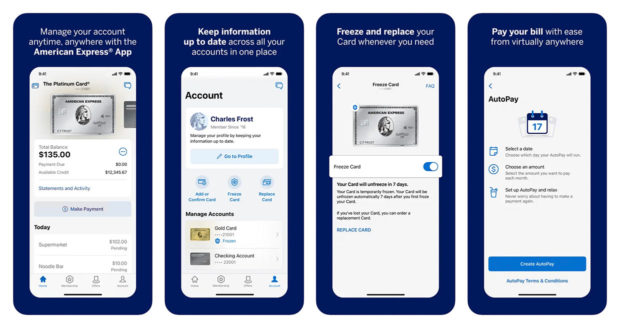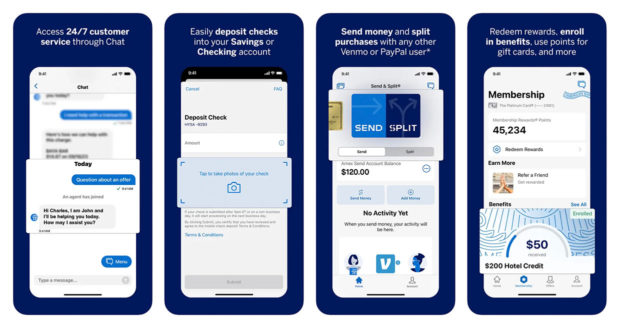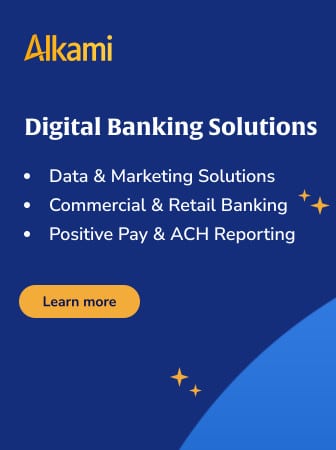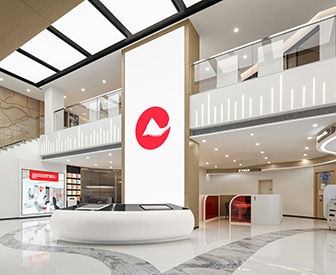Millennials and Gen Z account for over 60% of new American Express accounts globally, which puts them center stage for the company.
These consumers not only represent the company’s main source of new relationships, but they also use their cards more often than other generations of Amex cardholders. On top of that, their spending continues to increase. In the first quarter 2024, combined Millennial and Gen Z spending was up 15% over the year before. In some spending categories, they play a dominant role. For example, customers aged 35 and under spend 70% more in restaurants with Amex cards, on average, than other age groups.
This makes them a key focus for the company as a whole, but they are especially so for Amex teams working in digital experiences and design.
Millennials and Gen Z are digital natives and tend to use more of the services Amex offers through its mobile app and its website, so in many ways the company’s digital cadre is playing to these generations. They are the heavy users of many of the company’s newer digital services, such as its interface with peer-to-peer payments via Venmo and PayPal.
“This is not to say that our Gen X and Boomer customers are not digitally engaged,” says Stewart Kendall, SVP-enterprise digital experiences. “We also see strong engagement there. But they typically use more of the core account servicing capabilities in our digital channels, such as paying their bills, managing their accounts, downloading statements. These days we offer a much broader suite of services digitally.”
Overall, according to Kendall, among digital users the mix in usage is about a third using the mobile app only, a third using the website only, and the other third using both mobile and website. Younger cohorts trend more mobilely. Kendall says the functionality of the two digital forms differed, but increasingly what you can do on the website you can also do on the app.

The Financial Brand Forum Kicks Off May 20th
Explore the big ideas, new innovations and latest trends reshaping banking at The Financial Brand Forum. Will you be there? Don't get left behind.
Read More about The Financial Brand Forum Kicks Off May 20th

Join industry’s leading AI conference - free passes available!
Ai4 is coming to Las Vegas, August 12-14 2024. Join thousands of executives and technology innovators at the epicenter of the AI community.
Read More about Join industry’s leading AI conference - free passes available!
“The Gen Z and Millennial audience are into doing more browsing within our app, really understanding the breadth of what they’re getting from the Platinum Card or the Gold Card,” says Evan English, VP-product design and research.
Even as some Boomer cardholders show interest in some of the company’s newer services, English says a message she hears in customer research among this group is that they value simplicity and quick access to basic services.
This is a sampling of the factors that go into the balancing act of mobile app design at American Express. English says even as the company expands what’s in the app, it’s necessary to keep essential functions like checking balances easily findable, not burying them beneath newer bells and whistles.
“If you don’t do these two together, you can end up with a really complex mess,” says Kendall.
“We could have all the fancy features in the world, but we need to make sure that a customer can service the most basic fundamentals at the end of the day, first and foremost — and that’s money in, money out,” says English.
The company’s app covers more ground than the typical mobile banking or credit card app, including the company’s take on card-based buy now, pay later —”Plan It”; multiple paths to rewards redemption, including conversion of points to gift cards within the app; Amex Offers incentives; and access to special programs and perks at events, arranged by Amex. For example, Amex cardholders at the Coachella Valley Music and Arts Festival could avail themselves of special Amex-only events and “merch,” Amex-exclusive lines, and on-site spending incentives.
Kendall and English took questions from The Financial Brand about app design and how the company tinkers and tailors with its offerings.
Read more: How Bank of America Unified Five Apps Into One Experience
Revamping the Amex App to Take Out the Creaks
Kendall says that the app now contains 50 or so features that have been added over time.
As this growth was underway, around 2018, Kendall says, the volume of features was making the app begin to “creak at the seams.” Even as more features were added, this feeling drove an effort to reframe the app experience. This task has basically become an ongoing one as today the company implements updates to the app roughly monthly, with extensive testing and limited-scale introductions of some features and adjustments to test the waters.
Ratings are a moving target. On the App Store, the iOS version of the app has an average rating of 4.9 out of 5. On Google Play, for Android users, the app has a ways to go yet, with the average rating at 3.9 out of 5. These ratings are important because they are what the public sees when it is considering downloading an app, Kendall says. For American Express developers and designers, while they are indicative, the company has multiple ways of working with consumers interactively to test features and approaches.
“We leverage a lot of different surveys to collect feedback,” says English, “and we do a lot of user research as well. As we prioritize our feature backlog, and design those experiences, we run very early stage designs through to almost-finished designs through customers to make sure that what we’re putting out into ‘the wild,’ as they say, has been validated by customer feedback along the way.”
A key reason for this stage is to catch pain points early, “before we go 100% to the full user base,” says English.
The company has also found that initial reactions, even those from the user base, aren’t necessarily the final thinking.
“We recognize that it’s just human nature that if you change something, there is going to be a learning curve for people. They’ll either have an adjustment period or need some hand-holding through it.”
— Evan English, American Express
To help with such transitions, Amex uses aids like introductory help screens to flag a new feature or functionality. “We find that if we do a really big change, there is a bit of dissatisfaction or even a dip in ratings, but then it quickly rebounds,” English says.
Read more: Major Banks’ Mobile Apps Evolve into ‘Payment Central’ for Consumers

Playing to the Power Users: Millennials and Gen Z
Some of the best feedback during product research comes from Millennials and Gen Z, whose expectations typically run higher than older generations. At some levels, the relationship almost becomes one of co-creation, according to English.
“They are the power users of many apps,” she explains. “Rather than having them merely validate the known feature that we’re developing, this is more allowing customers to weigh in on what they want to see us create.”
Stewart says a recent change to interacting with the app was what tech staff refer to as “the carousel experience.” This is sideways scrolling among the company’s various features, to enable browsing within the app.
“That was a real move away, for us, from the traditional web paradigm of how you interact with all of your different products and experiences with us into a really tactile flow,” says Kendall. He explains that while it was not something that customers were asking for, experience working with customers on potential features had demonstrated it was a feature they would like to try out.
New ideas can come from either direction, that is, from the teams Kendall and English work with, or from client functions that are in charge of the ultimate product behind the app’s offerings. Sometimes collaboration produces joint ideas.
“New ideas sometimes get generated, and that can be an awesome moment,” says English. “Essentially now we’re building towards something new that we’ve come up with together.”
Designers don’t just compare the Amex app to other financial services mobile offerings. Apps in other verticals that younger cardholders may be exposed to can serve as inspiration for ways to handle Amex offerings.
English explains that some app-based games use techniques for displaying data that have helped make the Amex app’s presentation of money clearer. “It’s not how users use game apps we’re looking at, from a functionality standpoint, because it’s different,” says English. “But stylistically there might be something we’ll look at.”
Read more about Gen-Z Banking:
- Gen Zers Aren’t Going to College. Here’s What That Means for Banks.
- Young Women Are Getting Richer. Here’s How Banks Should Market to Them
- BNPL’s Dark Side: Younger Consumers Face Credit Trouble Ahead
- Engaging Gen Z – Crafting a New Era of Digital Banking

Success Story — Driving Efficiency and Increasing Member Value
Discover how State Employees Credit Union maximized process efficiency, increased loan volumes, and enhanced member value by moving its indirect lending operations in-house with Origence.
Read More about Success Story — Driving Efficiency and Increasing Member Value

The unfair advantage for financial brands.
Offering aggressive financial marketing strategies custom-built for leaders looking to redefine industry norms and establish market dominance.
The Challenges of Designing on Multiple Platforms
Managing ongoing development of an app hinges on several factors, not all of which lay completely in a company’s control. Kendall says that American Express holds some patents for mobile features and functionalities, but unlike a website, the app landscape isn’t completely the territory of companies offering apps.
“From an experiential standpoint, many of the components we use are driven by the guidelines that come with each operating system. So, where we can, we are using Apple’s design guidelines and the Android guidelines to make sure that we are keeping consistent with what customers expect within the Android operating system and the iOS ecosystem.”
— Stewart Kendall, American Express
English explains that the app, on each platform, is a mix of the operating system as well as the experiences produced by the brand itself, “which is a very unique asset.”
Maintaining consistency across the app and all of American Express digital relies on a centralized approach.
“We have internal design systems that basically take the best of iOS and Android and merge each with the best of the American Express brand,” says English. She says that gives Amex a library of design files and components that designers and developers can use across all projects in order to maintain consistent look and feel and to repurpose processes that can be used for multiple functions as the app continues to expand.
English says this is called the Amex native app design language. One subset of that which has been introduced recently is a library of unique illustrations that can be used across the app to consistently illustrate features and values the company is integrating into the app.
Read more: Consumers Have Embraced Digital Wallets. But They Also Want Them to Be Better

The Challenges of Being an International Digital Player
A special factor American Express encounters as it revamps and tweaks its digital face is its international nature.
Large international players like American Express need to tailor aspects of their apps to each country. Amex offers products and services in over 200 countries in 43 different currencies. Not everyone sees financial information the same way that Americans do — in some places consumer expect to see commas where we would expect decimal points, for example — and some Amex products work differently in some countries.
At the time of the interview, Kendall notes, a team was being sent to Japan to work with local teams to better adapt the current website to Japanese preferences:
“The little things that you might take for granted when an app or a website is designed in this building in Manhattan and getting shipped across the world, we have to make sure we don’t just make assumptions about how customers will interact with it and what their expectations are.”









